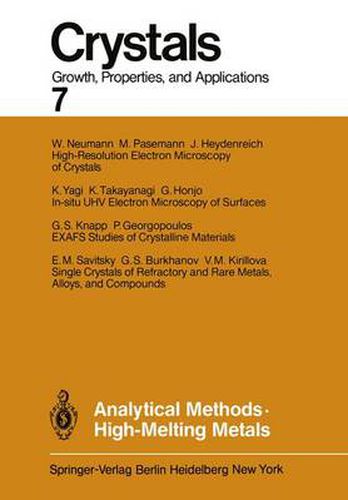Readings Newsletter
Become a Readings Member to make your shopping experience even easier.
Sign in or sign up for free!
You’re not far away from qualifying for FREE standard shipping within Australia
You’ve qualified for FREE standard shipping within Australia
The cart is loading…






This title is printed to order. This book may have been self-published. If so, we cannot guarantee the quality of the content. In the main most books will have gone through the editing process however some may not. We therefore suggest that you be aware of this before ordering this book. If in doubt check either the author or publisher’s details as we are unable to accept any returns unless they are faulty. Please contact us if you have any questions.
In solid state physics and in materials science the investigation of the connection between the properties of solids and their microstructure is of major importance. For crystalline materials this connection is related to the lattice structure, and it can be shown convinc ingly that the material properties depend on deviations from the ideal lattice structure in the majority of cases. For this reason a reliable detection and analysis of defects in nearly perfect crystals is necessary, and a sufficient spatial resolution of the methods applied is required. Because electrons on the one hand strongly interact with the matter to be investigated and on the other hand can easily be focused electron-optical methods are very advantageous for this purpose. They are used in the diffraction mode, in the imaging mode and in the spectroscopic mode. The attainable high lateral resolution in the imaging mode makes the application of electron microscopy especially effective. Although already valuable information on crystal defects can be gained by using the routine technique of diffraction contrast imagingl-3) which has a resolution of some 4 10 nm - in the special weak-beam technique ) of some nm -, the detection of crystal defects and inhomogeneities, resp. on an atomic or molecular level by the aid of high resolution electron microscopy gets increasing importance.
$9.00 standard shipping within Australia
FREE standard shipping within Australia for orders over $100.00
Express & International shipping calculated at checkout
This title is printed to order. This book may have been self-published. If so, we cannot guarantee the quality of the content. In the main most books will have gone through the editing process however some may not. We therefore suggest that you be aware of this before ordering this book. If in doubt check either the author or publisher’s details as we are unable to accept any returns unless they are faulty. Please contact us if you have any questions.
In solid state physics and in materials science the investigation of the connection between the properties of solids and their microstructure is of major importance. For crystalline materials this connection is related to the lattice structure, and it can be shown convinc ingly that the material properties depend on deviations from the ideal lattice structure in the majority of cases. For this reason a reliable detection and analysis of defects in nearly perfect crystals is necessary, and a sufficient spatial resolution of the methods applied is required. Because electrons on the one hand strongly interact with the matter to be investigated and on the other hand can easily be focused electron-optical methods are very advantageous for this purpose. They are used in the diffraction mode, in the imaging mode and in the spectroscopic mode. The attainable high lateral resolution in the imaging mode makes the application of electron microscopy especially effective. Although already valuable information on crystal defects can be gained by using the routine technique of diffraction contrast imagingl-3) which has a resolution of some 4 10 nm - in the special weak-beam technique ) of some nm -, the detection of crystal defects and inhomogeneities, resp. on an atomic or molecular level by the aid of high resolution electron microscopy gets increasing importance.